We examined 15 years of Give2Asia’s disaster grantmaking to understand giving patterns, program impact, and opportunities in the philanthropy sector.
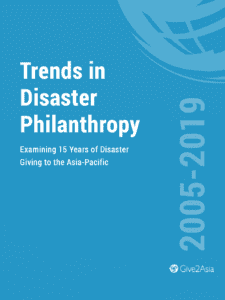 Today, Give2Asia is pleased to share a new report: Trends in Disaster Philanthropy—Examining 15 years of Disaster Giving to the Asia-Pacific. You can download the full report here or read on for a summary and highlights.
Today, Give2Asia is pleased to share a new report: Trends in Disaster Philanthropy—Examining 15 years of Disaster Giving to the Asia-Pacific. You can download the full report here or read on for a summary and highlights.
While the world’s attention remains on the unprecedented COVID-19 pandemic, recent severe flooding across Asia reminds us that natural disasters continue to impact the world, creating new challenges and compounding impacts of COVID-19.
As a matchmaker between international donors and local nonprofits, Give2Asia has a unique perspective on which disasters get funded…and how. Late last year, we analyzed 15 years of internal disaster giving data from January 2005 to September 2019, starting with our first disaster campaign for the devastating 2004 Tsunami that impacted multiple countries across south and southeast Asia.
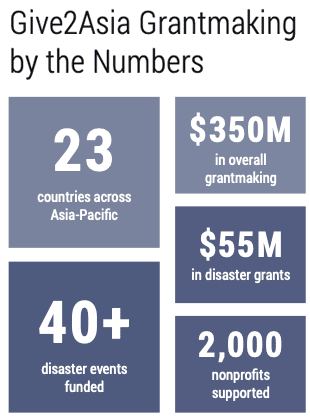
Our goal for this research was twofold. First, we wanted to contribute to the evidence base of disaster philanthropy by sharing our data with the philanthropic community: from our esteemed giving partners—including corporations, foundations, and strategic individual donors—to collaborators and fellow grantmakers. We aimed to highlight the collective impacts we have made and help the sector pursue more thoughtful giving.
Second, we sought to better understand the trends that have influenced giving for disasters. As an organization that prides itself in funding local groups, this data helped us reflect on our own effectiveness in driving resources to such organizations. This effort was funded as part of a 6-year grant program at Give2Asia focused on creating disaster readiness at the community level.
Our questions about disaster philanthropy in Asia
- What have been the overall trends in disaster giving and grant making to the Asia-Pacific since 2005?
- Is disaster philanthropy prioritizing long-term needs of communities?
- Does the data elucidate insights in donor behavior that can push the sector to fund more effectively moving forward?
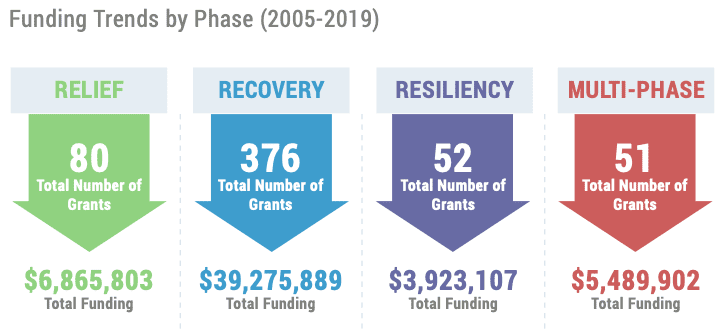
Key Findings
- Mid/long-term recovery programming received more funding than immediate relief from Give2Asia’s donors.
- Disaster resilience and recovery are notoriously underfunded. Give2Asia encourages our donors to fund a mix of immediate and long-term needs.
- Funding for disaster risk reduction, preparedness, and resiliency has steadily increased since 2004.
- Infrastructure and health received the highest allocation of funding across all sectors in the aftermath of disasters.
- 79% of funding supported local organizations.
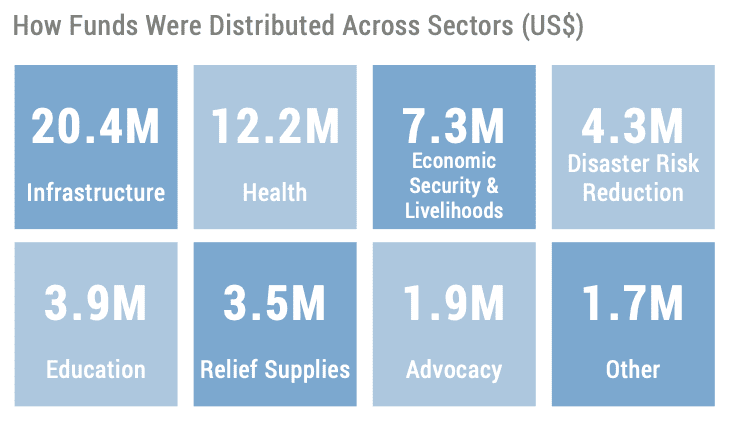
The importance of local-level disaster funding
From both an international development and donor perspective, supporting community-based work has the highest return on investment. International funding, however, rarely trickles down to the local level where communities need it most. Give2Asia works to fill this gap by supporting localized programming across our portfolio.
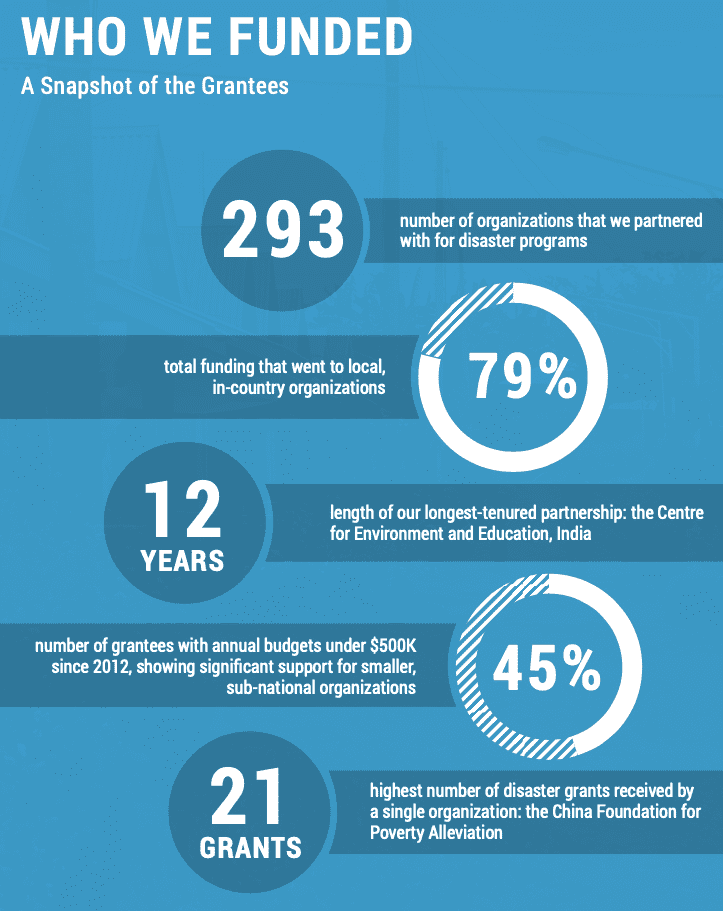
Recommendations to the philanthropy sector
The Asia-Pacific region is home to half the world’s population and more than two thirds of natural disasters globally. It’s essential that we increase resources to support local capabilities as these groups are on the frontlines and best positioned to understand and respond to needs in their communities. Specifically, our analysis suggests that donors should:
- Continue investing more in disaster risk reduction, preparedness, and resiliency. The data shows that donor funding is inadequate, so communities are not being properly equipped for the next disaster.
- Increase attention to mental health and psychosocial support. Disasters are incredibly traumatic for individuals and communities, and the effects can last for years.
- Explore programming focused on indigenous knowledge. This currently represents less than 1% of overall disaster programming.
From disaster response to disaster preparedness
Since 2014, Give2Asia has been implementing DisasterLink (formerly NGO Disaster Preparedness Program) in eight Asian countries that are highly vulnerable to disasters. The program focuses on funding innovative programming at the community level, strengthening networks and capacities of local organizations, and educating donors on the importance of funding preparedness activities.
For more trends and insights on disaster philanthropy, download the full report, Trends in Disaster Philanthropy—Examining 15 years of Disaster Giving to the Asia-Pacific.
To learn more or to discuss a potential donation, request a consultation with our international giving team.





